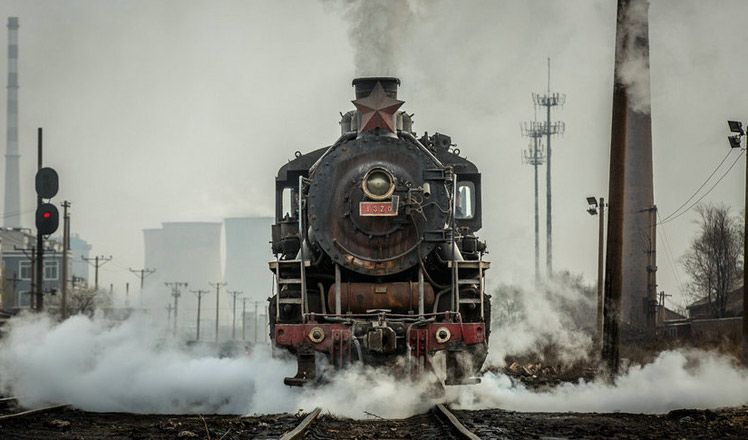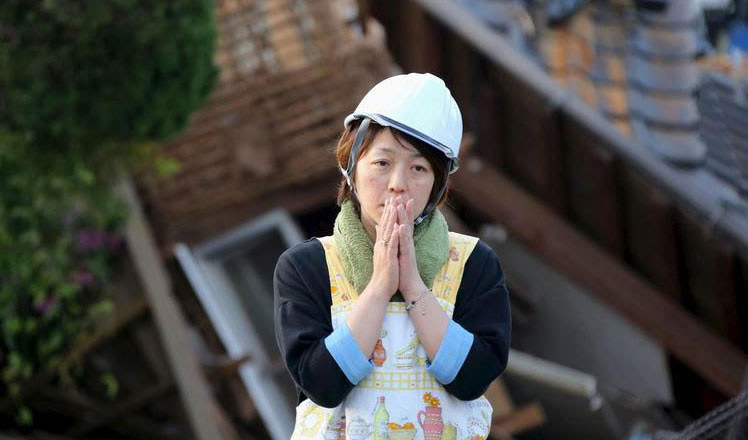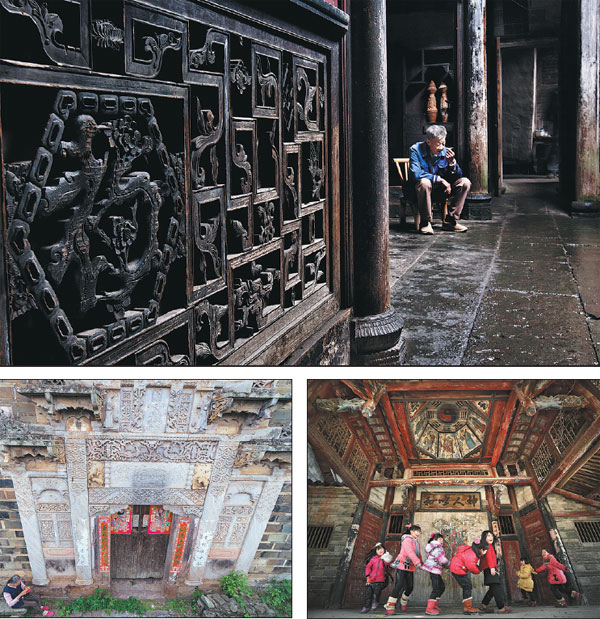Aisle of history
Updated: 2016-04-19 09:20
By Deng Zhangyu(China Daily USA)
|
|||||||||
With the country's modernization, ancient villages are disappearing at a fast pace as residents replace old houses with new buildings. But a county in East China is seeking to reverse the trend. Deng Zhangyu reports.
When twilight falls, Hu Qinghua's routine starts. After he finishes work in his rice fields he visits a family in Youdian village, speaking to them about the history of their house and narrating stories about their common ancestors, hoping to persuade them to repair their house, which was built hundreds of years ago.
Hu, 63, can trace his ancestry back to more than 20 generations in an ancient village in East China's Jiangxi province. All the buildings of Hu's village in Jinxi county are ancient houses dating back to the Ming Dynasty (1368-1644).
However, most of the houses are empty. And some are even on the verge of collapse.
"Young people move to cities, leaving their parents behind in the village. It's almost empty now," says Hu.
Hu's village is one of more than 100 ancient villages in Jinxi. All these villages have traditional houses built also in styles of the Qing Dynasty (1644-1911). There are about 11,000 houses built during both dynasties in the county, according to the local government.

"It's like a huge museum of ancient architecture. It's rare to see ancient houses that are mostly in their original forms in such large numbers in China," says Guo Daiheng, an expert on Chinese traditional architecture.
With China's modernization, ancient villages are disappearing at a fast pace as residents replace old houses with modern buildings. An average of 100 villages are vanishing each day in China, scholar Feng Jicai remarked during last year's two sessions in Beijing.
The top annual meetings of the National People's Congress and the Chinese People's Political Consultative Conference are commonly referred to as the two sessions.
But not all old houses are demolished. Some are transformed into tourist attractions and the local residents are replaced by businesspeople.
Guo says houses in Jinxi have retained their olden-day forms as locals have great respect for their ancestors.
"People don't demolish old houses. They may leave for the cities or build new houses near their village," says Guo, whose team has been in the area for two months now with the sole aim of studying the houses and protecting them.
She has helped with a conference called Digital Heritage Around China to raise awareness and money for the protection and preservation of ancient villages.
In Youdian village, there are 72 ancient stone buildings with walls that are several meters high. The village's most famous ancestor was Hu Guifang, a senior official in the Ming Dynasty, who was then in charge of construction, transportation and agriculture.
He returned to the village only after his retirement.
The village mainly houses descendants of the official. They have lived in the buildings built by their ancestors for generations.
Other villages in Jinxi share many similarities with Youdian. They have ancestral temples, schools and houses with similar layouts that include ponds, long and narrow stone alleys. Well-known ancestors of today's villagers were influential scholars, writers, poets and powerful officials in imperial China.
All these villages have been influenced by Confucianism and Taoism, says Guo. That's why they are built in harmony with the surrounding rivers and mountains.
Now, all these villages face a common problem - people leaving and the houses decaying.
Meanwhile, Hu Qinghua's daily visits and persuasion have continued for more than a year.
For the few residents of the village, they recognize that their houses must be preserved as a kind of cultural heritage after the local government offered them money to help them with repairs.
"I told them (the villagers) that if they don't repair their houses, it's a kind of disrespect to their ancestors," says Hu.
Most villagers take Hu's words seriously. But they can't afford the cost of repairs.
To repair an ancient house takes a lot of money.
Just to stabilize it and fix its wooden windows can cost about 30,000 yuan ($4,500). But the average annual income of villagers who work in the rice fields is about 10,000 yuan, says Hu.
Huang Qinhua, a local official in Jinxi, says: "A resident often pays 2,000 to 6,000 yuan for the repairs and the government covers the rest."
Separately, Huang says the local government also wants to bring in private funds to protect the ancient villages.
For instance, Guo's team and the organizer of Digital Heritage Around China have promised to help fix decaying houses.
But Guo says repairing the houses is relatively easy compared with convincing young villagers to return home from the cities.
These villages that reply mainly on agriculture can't provide enough job opportunities like big cities do. However, Guo says she sees hope when she meets young people making plans for their hometowns.
A young man who Guo met earlier this year told her that he realized the value of the houses in his village when he saw how ancient houses are protected in other countries.
So he has decided to return home and to start work on repairing his own house.
"In China, the link between people and their villages is very powerful. So, I believe there's hope that the next generation will respond," she says.
Contact the writer at dengzhangyu@chinadaily.com.cn
|
Top: An elderly villager at his ancient house in Jinxi county, Jiangxi province. Above left: An old house with stonecarved patterns. Above right: Children play in an old ancestral temple. Photos By Zhou Fuyang, Li Huihuang And Jie Gang / For China Daily
|
(China Daily USA 04/19/2016 page7)
- US presidential hopefuls battle for New York on eve of primaries
- AP, Reuters, New York Times among 2016 Pulitzer Prize winners
- US voters' anger over big money in politics mounts
- Japan quake survivors struggle with shortages
- Possible MH370 debris found in S. Africa being examined in Australia
- More cooperation among China, Russia, India in global affairs: Chinese FM

 Reuters' Pulitzer-winning photos of migrant crisis in Europe
Reuters' Pulitzer-winning photos of migrant crisis in Europe
 Young people invent bicycle wheel hub charger
Young people invent bicycle wheel hub charger
 Culture Insider: Five things you may not know about Grain Rain
Culture Insider: Five things you may not know about Grain Rain
 Smart age makes a billionaire in six years
Smart age makes a billionaire in six years
 China's last steam locomotive is to disappear
China's last steam locomotive is to disappear
 British royal couple visits the Taj Mahal
British royal couple visits the Taj Mahal
 The world in photos: April 11- April 17
The world in photos: April 11- April 17
 PLA plane lands at Yongshu Jiao reef to help patients
PLA plane lands at Yongshu Jiao reef to help patients
Most Viewed
Editor's Picks

|

|

|

|

|

|
Today's Top News
China's finance minister addresses ratings downgrade
Duke alumni visit Chinese Embassy
Marriott unlikely to top Anbang offer for Starwood: Observers
Chinese biopharma debuts on Nasdaq
What ends Jeb Bush's White House hopes
Investigation for Nicolas's campaign
Will US-ASEAN meeting be good for region?
Accentuate the positive in Sino-US relations
US Weekly

|

|










